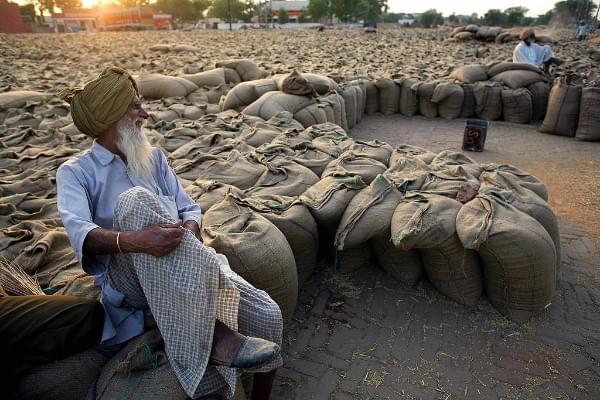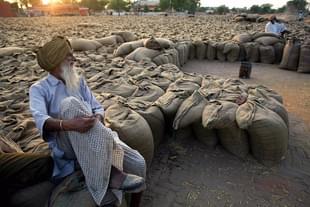Economy
Rural Resurgence, Massive Infra Building; MSMEs Struggle, Real Estate Faces Meltdown
Swarajya Staff
Sep 28, 2016, 04:32 PM | Updated 04:32 PM IST
Save & read from anywhere!
Bookmark stories for easy access on any device or the Swarajya app.


A recent report released by Spark Capital, a Chennai-based investment bank, paints a mixed picture on the state of a few key sectors in the Indian economy. It points to an agriculture-led resurgence in rural India and shows how massive government spending is single-handedly driving the recovery in the capex cycle.
However, the report also points to a rather dismal showing in the micro, small and medium enterprises (MSME) sector and a serious crisis in the real estate sector.
A clearly visible rural recovery
The report states that volatility in a farmer’s income is likely to reduce in the following years. Unlike last year, which saw a one percent decline, farmers’ incomes are expected to go up by 10 percent this year as kharif crops have shown good results. India’s foodgrain production is estimated to rise by nine percent to an all-time high of 135.03 million tonnes this kharif season, on the back of a record output of rice and pulses following a good monsoon.
The report also details how the Prime Minister’s Crop Insurance Scheme is proving to be a game changer for farmers. According to the report, over 80 percent of the farmers in Maharashtra’s 18 districts have subscribed to this scheme, which covers over 53 crops. The crop insurance scheme will create an estimated Rs 150-billion market for general insurance companies. The risks covered under this scheme are flood, fire, lightning strike, prolonged clouds, cyclonic storm, landslide, drought or dry spells and pest infestation.

The report also suggests that the removal of APMC Act for fruits and vegetables is a potential game changer for food inflation and could structurally bring prices down by over 25 percent.
Farmers in Uttar Pradesh (UP) will be relieved due to a surge in sugar prices, the report claims. The price is expected to rise from Rs 3,000 per tonne in FY 2016 to Rs 3,700 per tonne in FY 2017. For the last three years, a total of five million sugarcane-cultivating families in UP were facing huge challenges due to no or partial payment for their sugarcane by sugar mills. With assistance from the government, the mills have paid dues of over Rs 122 billion, and the remaining amount will be paid to the farmers in the next month. The report also suggests that this could have a huge impact on the UP assembly election slated for next year.

According to the report, farm mechanisation and the use of agrochemicals are gaining momentum. Due to fragmented farm-holding in India, the purchasing capacity of the farmers falls significantly and owning costly machines no longer remains a viable option. Therefore, growth in farm mechanisation is welcome news for the country.
Infrastructure Spending
The poor state of infrastructure in India has always been a cause of concern. The report reveals that government’s renewed focus and increased spending is improving the quality of infrastructure in India. The government spent 36 percent of the full year’s target in April-July (FY 2017), the highest ever spent in the first four years of a fiscal year.
In Uttar Pradesh alone, the spending has risen from Rs 64 billion in FY 2013 to Rs 147 billion in FY 2016. In Tamil Nadu, the Kovai-Erode-Salem Industrial Corridor is in progress. The government has sanctioned Rs 45,000 crore, of which Rs 11,000 crore will be spent on roads. In Mumbai, the government is spending Rs 13,000 for Mumbai Coastal Road. This investment, in turn, will fuel growth in small- and medium-sized enterprises (SMEs) and agri belts.
MSME Still Struggling
The report, however, raises alarm bells on the state of the MSME sector.
Though significant growth was observed in agri belts, MSMEs are still struggling for growth. As per the report, the fall in export and low manufacturing growth are key reasons for the fall in MSME sector.
The local textile industry is suffering due to fluctuating raw material prices, increasing labour cost, cheaper imports and pollution norms. While financing is still an issue for small business owners, private sector banks have helped in improving the situation.
Real Estate Crisis Deepens
The report also discusses the slow growth in real estate, now visible in smaller cities too. The increasing unsold inventory is worsening the situation for buyers and investors and will take at least two to three years to clear out.
The report was prepared after a detailed study of small and medium-sized enterprises (SMEs) and agri belts across four Indian states of Uttar Pradesh, Gujarat, Maharashtra and Tamil Nadu.
Also Read:
Food Inflation Will Remain Unless The Politicians Running APMCs Are Removed
Breaking APMC Monopoly: Maharashtra Takes A Bold Step To Double Farmers’ Income





